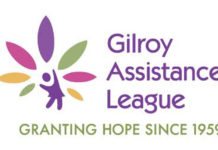GILROY
– Three low-performing schools were headed in the right
direction last year but still must take specific steps to raise
student performance, according to an independent evaluator’s
report.
By Lori Stuenkel
GILROY – Three low-performing schools were headed in the right direction last year but still must take specific steps to raise student performance, according to an independent evaluator’s report.
The annual report for the 2002-03 school year is required for schools participating in a state program that provides additional funding to schools with low standardized test scores. Evaluators from WestEd, an education research firm, observed Eliot and Glen View elementary schools and South Valley Middle School three times last year, visiting classrooms, reviewing student data and interviewing staff.
Eliot Principal Diane Elia said the report reinforces some of the changes made at the school this year.
“We have data that shows there’s movement, and like every school, there’s some ups and downs,” Elia said.
To combat the “downs,” changes were made to the reading program and tutoring is now offered after school.
The report noted that Latino and low-income students have lower test scores than their Caucasian, English-speaking counterparts. Half the school’s students scored in the bottom quarter group on state reading tests, but the evaluators said the school’s transition from a magnet for students with reading problems accounts for some of those students.
The school’s demographics have also changed as a result of the implementation of neighborhood schools.
While much of the information provided in the report is nothing new for the schools, Superintendent Edwin Diaz said the evaluation process itself will help the schools plan their objectives for next year.
“I think it’s very useful to have an outside person come in and do more of an in-depth evaluation,” he said. “Their perspective and what they’ve been able to observe really go into the process for how the schools are going to develop school plans for next year.”
The evaluators identified trends, both positive and negative, in each of the schools.
Latino students at Glen View showed the most improvement in their test scores, but there is a long way to go before English learners and low-income students score on par with English fluent and non-economically disadvantaged students.
Closing the achievement gap between subgroups is also an issue at South Valley, although Latino and low-income students improved their scores more than white students.
“We know that our under-performing students are starting to perform better and our achievement gap is narrowing, but it’s not closing quick enough,” Diaz said. “So it’s keeping that focus and making sure that grade-level and above students are challenged as well.”
Trustee Tom Bundros said he was impressed at the amount of data that was collected and the degree to which it was analyzed.
“There was a kind of depth there that I would like to see continued,” he said. “If there’s money, (let’s) do that with other schools as well, because it gives us an independent lens.”
The three WestEd evaluations were funded through the $237,280 grant for low-performing schools.













